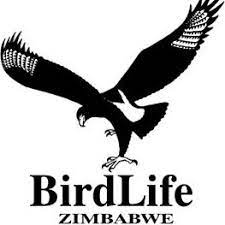CONSERVATION
Birds & Human Wildlife Conflict
RED-BILLED QUELEA
The Red-billed Quelea is a small brown weaver that can occur in huge flocks. Quelea are only found in Africa, especially in semi-arid zones and the Red-billed Quelea is abundant and widespread in this habitat. They are drab in appearance and have a distinctive red bill. They are small, between 11 and 13 cm long when adult and weigh about 15-20g. Historically, a typical roosting site could cover tens of square kilometres. Breeding areas can be equally extensive with trees covered by hundreds, sometimes thousands, of hanging nests weighing them down. In Zimbabwe, the Red-billed Quelea is widespread and when not attracted to crop growing regions is predominantly found in large flocks in the Zambezi and Save Valley regions of the country.
Diet
Queleas are known to consume 30 types of wild grass seeds, all five cultivated cereals, 10 non-grass seed items and insects, primarily beetles (Coleoptera) and grasshoppers (Orthoptera). Cereals are eaten in large quantities but most are gathered off the ground. In the semi-arid zones, the diets are confined mainly to wild grass seeds with Echinochloa, Paspalum and Urochloa often eaten. Individuals can eat up to 10g of seed in a day.
Quelea as a crop pest
Their ability to migrate long distances in search of food, water and new breeding grounds makes the quelea a threat to small-grain crops under irrigation, especially at the time when natural seed supply is diminishing. Quelea will eat grains of sorghum, millet, rice, wheat and other small-sized cereals and can cause enormous amounts of damage. They do not eat large seeds, such as maize grains or chickpeas. The reasons why quelea shift from eating natural grass seeds to cereal crops appear to vary and so it can be difficult to predict when the bird is likely to become a major pest, even when large colonies can be readily observed. Damage can also be spatially uneven, with some farmers worse affected than close neighbours.
Control measures used by Cereal farmers against quealea
The presence of quelea does not always mean that they are a threat or indeed responsible for major crop losses. The threat depends on availability of natural food supply while poor growth of crops could have many causes.
Over the years, various methods have been implemented to minimize the impact of queleas. These can be grouped into two main categories based on the magnitude of deployment – small-scale traditional methods and modern large-scale methods.
Traditional methods
Red-billed Queleas have been a source of protein for communities for decades. The birds are harvested as chicks by raiding breeding sites or as adults by using various rudimentary trapping methods. They might be discouraged from fields by the use of scarecrows in the form of brightly coloured plastics on sticks being placed across the grain fields.
Large scale control
- Historically various techniques to kill the birds at night were used when the birds were gathered in the roosting sites, e.g.:
- Airplane spraying roosting sites with Queletox (fenthion)
- Large scale eradication campaigns in the breeding sites using dynamite or diesel/petrol bombs
- Tractor-mounted mist blowers
Problem Statement
There is urgent need that research is carried out in Zimbabwe to update information on the species’ current population, distribution and impact. Research also needs to be conducted to verify the measures which are currently being used to control the Red-billed Queleas by stakeholders (e.g. farmers and commercial sector), government and regulatory bodies and to identify what protocols are in place and to what extent these are being implemented and enforced. Risk assessments of quelea spraying needs to be conducted from a commercial productivity perspective as well as from a conservation perspective. Conceivably, spraying of persistent organophosphates in the proximity of crops due for export (e.g. blueberries, tobacco), which are subject to stringent Maximum Residue Level (mrl) compliance for export, is extremely damaging to business too. There is also a critically urgent need to create awareness of the impacts of the chemicals being used in the eradication of queleas in terms of polluting the environment and water sources (being utilised by other animals, e.g. cattle) as well as the killing of other bird species and biodiversity.
